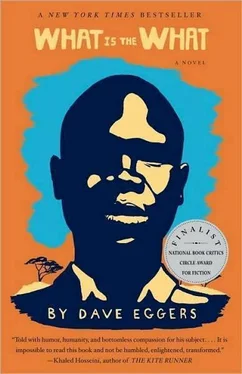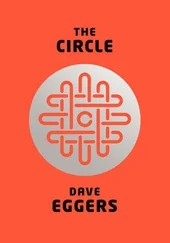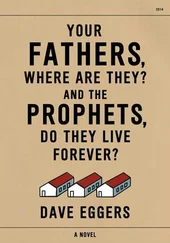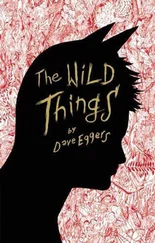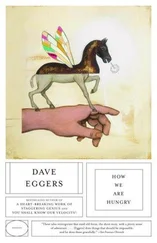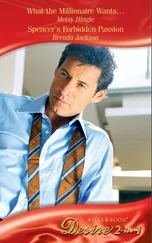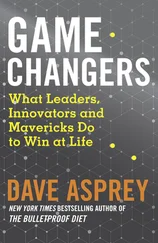At one hundred and twenty-five, I take a break. I cannot believe that the clatter has not brought anyone to the door. My frustration is worse than the pain of the bindings, of being struck with the side of a gun. Where are these people? I know that people are hearing me. It is not possible that they are not hearing me. But they see it as beyond their business. Open the door and let me stand again! If I have my hands I can stand. If I have my hands I can free my mouth and tell you what happened here.
I kick again: One hundred and fifty. Two hundred.
This is impossible, that no one would come to this door. Is the noise of the world so cacophonous that mine cannot be heard? I ask only for one person! One person coming to my door will be enough.
For most of the Lost Boys in America, Mary Williams was one of the first people they knew, the conduit to all available assistance and enlightenment. Liquid-eyed and with a voice always close to breaking, Mary was the founder of the Lost Boys Foundation, a nonprofit organization designed to help the Lost Boys in Atlanta adjust to life here, to get into college, to find jobs. Achor Achor brought me to her after I had been in Atlanta for a week. We left the apartment in the rain and took the bus to her headquarters-two desks in a squat glass-and-chrome building in downtown Atlanta.
— Who is she? I asked him.
— She is a woman who likes us, he said. He explained that she was like an aid worker from one of the camps, though she was unpaid. She and her staff were volunteers. It seemed a strange concept to me, and I wondered what would drive her, or her associates, to do favors for us, for free. It was a question I asked often, and the other Sudanese often asked it, too: what is wrong with these people that they want to spend so much time helping us?
Mary was short-haired, soft-featured, with warm hands she put on either side of mine. We sat down and talked about the work of the foundation, about what I needed. She had heard that I was a public speaker, and asked if I would be willing to address local churches, colleges, and elementary schools. I said I would. All around her desk were small clay cattle, much like Moses had made when we were very young. The Sudanese men in Atlanta had been making them, and Mary would be auctioning them off to raise money for the foundation, which was operating with the support and office space of Mary's mother, a woman named Jane Fonda. I was told that Jane Fonda was a well-known actress, and because people would pay more money for objects with her signature upon them, Jane Fonda had signed some of the clay cows, too.
I remember getting a tour of the office after talking briefly with Mary that day about my needs and plans, and I remember being confused. I was shown a very large and elaborate display case that held hundreds of glimmering statues and medals awarded to Jane Fonda. While moving slowly down along the case, my eyes dry-I couldn't blink; I admit I like to look at trophies and certificates-I saw many pictures of a white woman who did not resemble Mary Williams. Mary was African-American but I slowly surmised that Jane Fonda was a white woman, and I knew I would have more questions for Mary after I finished inspecting the contents of the glass case. In so many of the pictures around the office, Jane Fonda was in very small outfits, exercise clothing, in pink and purple. She seemed to be a very active woman. As we left the office, I asked Achor Achor if he could explain all this.
'Don't you know about her?' he said.
I knew nothing, of course, so he told me her story.
Mary was born in Oakland in the late sixties, into the world of the Black Panthers; her father was a captain, a prominent member, a brave man. She had five siblings, all of them older, and the family was poor and moved around frequently. Her father was in and out of prison, his charges related to his revolutionary activities. When he was free, he struggled with drugs, working odd jobs. Her mother, at one time the first African-American woman in the local welder's union, eventually succumbed to alcohol and drugs. Amid all this, Mary was sent to a summer camp in Santa Barbara for inner-city youth, owned and operated by the actress Jane Fonda. Jane Fonda came to know Mary well over the course of two summers, and eventually took her away from her crumbling home and adopted her. She moved from Oakland to Santa Monica and grew up there, with Jane Fonda's other, biological children. Fifteen years later, after college and human-rights work in Africa, and after her sister, who had become a prostitute at age fifteen, was murdered on an Oakland street, Mary read newspaper articles about the Lost Boys, and formed her organization soon after. The seed money was provided by Fonda and Ted Turner, who I was told was a sailor and an owner of many television networks. I later met both Jane Fonda and Ted Turner, separately, and found them to be very decent people who remembered my name and held my hand warmly between theirs.
This was not the only time the Lost Boys in Atlanta found themselves in contact with high-profile people. I cannot understand why it is, but I suppose it was the work of Mary, who tried everything she could to bring attention to us, and by extension to raise money for the Foundation. It did not, in the end, work, but along the way I shook the hand of Jimmy Carter and even Angelina Jolie, who spent an afternoon in the apartment of one of the Lost Boys in Atlanta. That was an odd day. I was told a few days before that a young white actress would be coming to talk to some of the Lost Boys. As always, there was much debate about who would represent us, and why. Because I had led many youth in Kakuma, I was among those chosen to be present, but this did not sit well with the rest of the young Sudanese. I did not care, though, because I liked to be present, to make sure the correct picture of our lives was presented, and that not too many exaggerations were made. So twenty of us crowded into the apartment of one of the Lost Boys living longest in Atlanta, and then Ms. Jolie walked in, accompanied by a grey-haired man in a baseball cap. The two of them sat on a couch, surrounded by Sudanese, all of us trying to speak, trying to be heard while also attempting to be polite and not overloud. I must admit that when I met her, I had no idea who she was; I was told she was an actress of some kind, and when I met her, she did look like an actress-she had the same careful poise, the same flirtatious eyes of Miss Gladys, my extremely attractive drama teacher in Kakuma, and so I liked her immediately. Ms. Jolie listened to us for two hours, and then told us that she intended to visit Kakuma herself. Which I believe she did.
There were so many interesting things happening in those first months in the United States! And all the while, Mary Williams was calling me and I her, and we had a very productive relationship. When I was having trouble receiving treatment for my headaches and my knee-it had been damaged in Kakuma-Mary called Jane Fonda and Jane Fonda brought me to her own doctor in Atlanta. This doctor eventually operated on my knee and improved my mobility greatly. She was very generous, Mary was, but she had already been hurt by the attitudes of some of the Sudanese she served, and I could see in her eyes, which always seemed on the verge of tears, that she was exhausted and would not last long in service to our cause. I remember first understanding how difficult it was for her, how little gratitude she received for the work she did, at a birthday party. She had arranged it all-a party with food, tickets to an Atlanta Hawks game, a private speech given by Manute Bol, the most famous Sudanese man in history, a former NBA player who diverted a large portion of his earnings to the SPLA. But still, there was grumbling and speculation about the job Mary was doing with the Lost Boys Foundation. Was she misusing donations? Was she ineffective in getting Lost Boys into college?
Читать дальше
